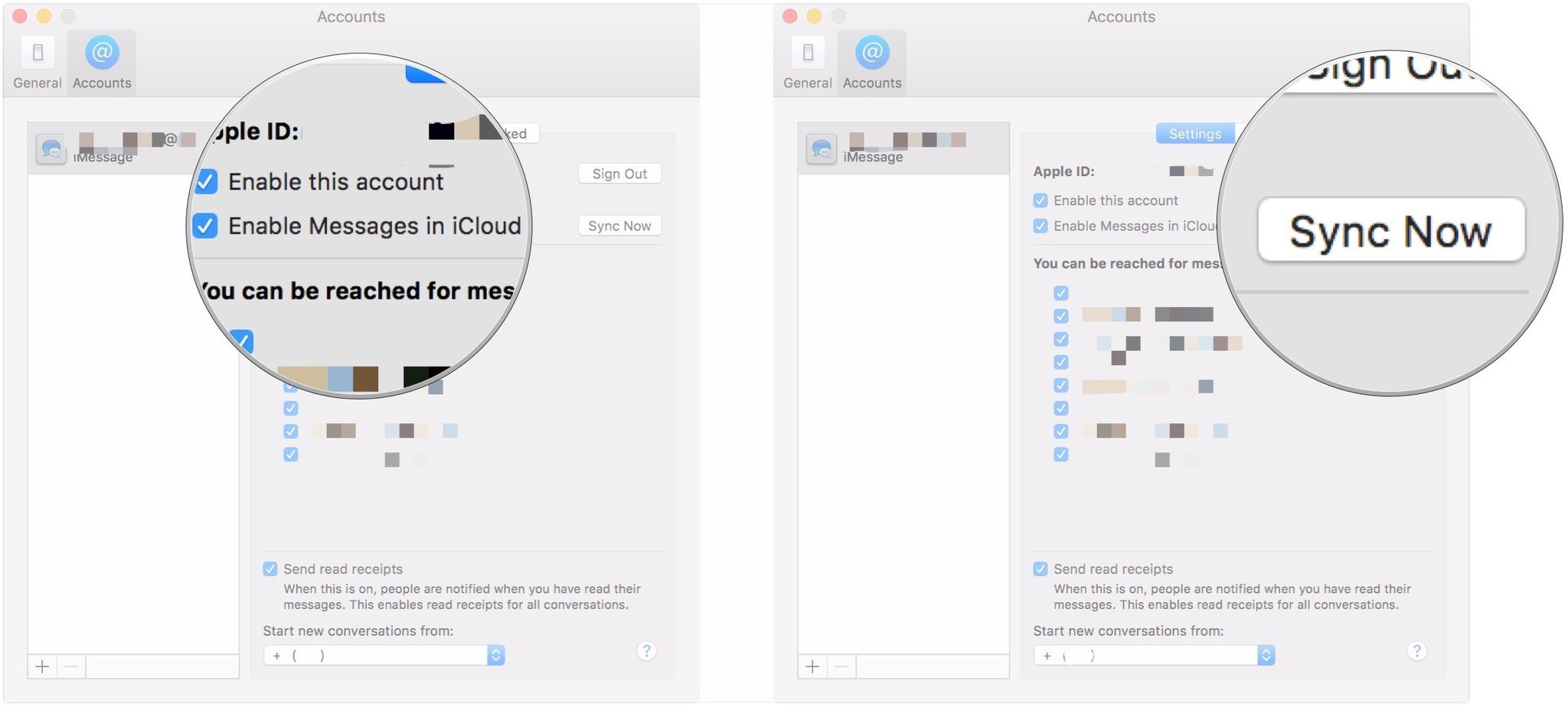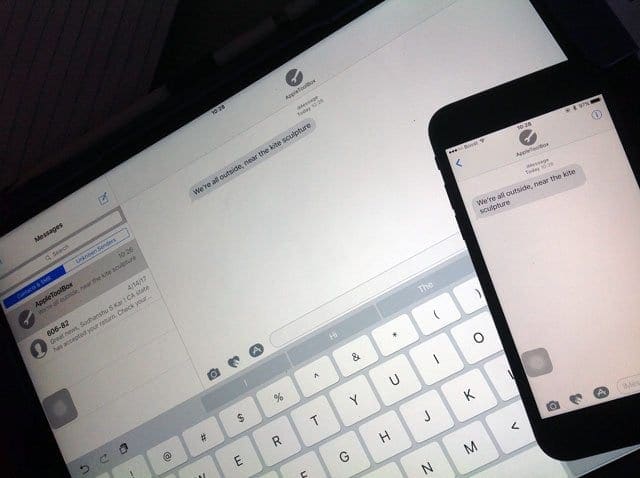

With this problem, quite frankly, there’s really no reason to use iMessage. Unfortunately, some people noticed iMessage not syncing when it’s supposed to. It’s quite convenient for multiple device users such as yourself. After all, it has the ability to synchronize messages across your devices, as long as you use the same account. Follow the few small steps above and enjoy using iMessage on your MacBook or iMac as well.If you own multiple iOS devices or a Mac, it’s natural that you’d use iMessage.


IMessage shouldn’t only be for your touch screen devices. You can now send and reply to iMessages on your Mac – and continue those conversations on your iPhone and iPad. When you’re done, close the iMessage preferences Window and your messages should start to appear. You can also click the Sync now button to start the syncing process. Now click in the tick box to the left of the words Enable messages in iCloud.
#SYNC MAC AND IPHONE IMESSAGE WINDOWS#
Next, from the Windows that appears, select the iMessage tab. To get your iMessages to sync with your Mac, click on Messages from the top menu bar and select Preferences. Once you’re signed in with your Apple ID, the Message App will open – yet it’s unlikely you’ll see any of your current messages: If so, follow the instructions and enter the details as requested.
#SYNC MAC AND IPHONE IMESSAGE VERIFICATION#
It’s also possible that Apple will require verification from one of your other devices. However, if you haven’t signed in to the Messages app with your Apple ID, then you will see the following window:Įnter your Apple ID details as required and make sure you use the same Apple ID that is stored in the iPhone or iPad that you wish to sync with. If you’ve already signed into your Apple ID on your Mac – when you were setting it up, for example – then you won’t need to follow the next few steps. If it isn’t showing in the Dock, you can also find it in the Applications folder. Once you have enabled iMessages to sync on your iPhone and iPad, the next step is to set up iMessage on your Mac. Do be aware that syncing will only work across devices that are signed into iCloud with the same Apple ID. If you also want iMessage synchronisation across your other iPhones and iPads, check each of your devices and flip the same switch if it isn’t on. However, if the switch is white, then you need to toggle it on by tapping the switch. If the switch to the right is on, it’ll appear green and iCloud has enabled iMessage syncing. The next step is to look down the list of Apps using iCloud and find Messages. Next, in the right-hand column, tap on iCloud. Now, from the settings window that appears, tap on your name at the top of the left-hand menu. So grab your iPhone or iPad and tap on the Settings App. The first step is to enable iMessage syncing within iCloud so, before we tackle the Mac, let’s check your iPhone, iPad (or both) to see if you’re set up or not. Not only that, but you can also synchronise the messages across your different machines, allowing you to communicate seamlessly on any device. While you undoubtedly use it on your iPhone or iPad, it’s also possible to experience iMessage on your Mac. IMessage is a great way to keep in touch with family, friends and colleagues who also have Apple devices.


 0 kommentar(er)
0 kommentar(er)
